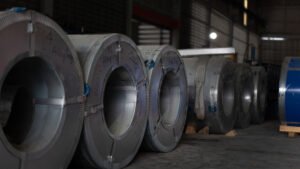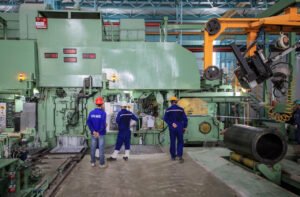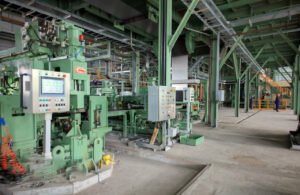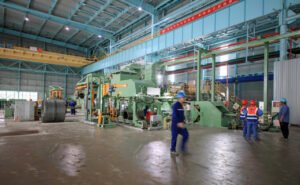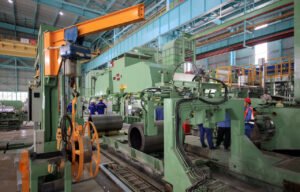How LME Nickel Volatility Influences Stainless Steel Sheet Prices
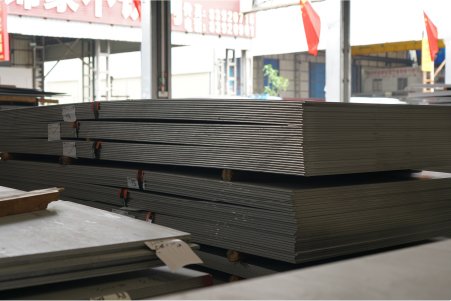
Are you struggling to forecast costs for your manufacturing projects? The unpredictable nature of London Metal Exchange (LME) nickel prices1 often creates a ripple effect, directly impacting the cost of stainless steel sheets and making budget stability seem impossible. This volatility introduces significant financial risk into your supply chain.
The price of stainless steel sheets is directly linked to LME nickel prices because nickel is a primary alloying element, typically making up 8-10% of popular austenitic grades like 304 stainless steel grade. Fluctuations in the LME nickel market are passed on to buyers through alloy surcharges, causing prices to shift accordingly.
This constant fluctuation can feel like navigating a storm without a compass. Last year, I was speaking with a long-term client in India, a manufacturer of high-end kitchen appliances, who was tearing his hair out over a sudden 15% jump in his material costs mid-quarter. His margins were evaporating. This is a story I hear all too often. Understanding the mechanics behind these price swings is the first step toward regaining control. It's not just about watching the market; it's about knowing what to watch and how to react.
The relationship between LME nickel and stainless steel isn't merely a simple case of input cost dictating output price; it's a far more complex interplay of global supply dynamics, speculative trading, and intricate pricing mechanisms like alloy surcharges. The infamous LME nickel short squeeze of March 20222, where prices astonishingly surged over 250% in two days, serves as a stark reminder of this. While that was an extreme event, it highlighted the market's vulnerability to factors far beyond simple supply and demand, including geopolitical tensions and large-scale financial speculation. For purchasing managers and business directors, ignoring this volatility is akin to sailing in treacherous waters with no regard for the weather forecast. Acknowledging this complexity is crucial for developing robust procurement strategies that can withstand market shocks and protect your bottom line.
What is the current state of LME Nickel volatility?
Feeling overwhelmed by the constant see-saw of nickel prices? One month, forecasts look stable, and the next, a sudden spike throws your entire budget into disarray. This unpredictability makes it incredibly difficult to plan for the future and commit to long-term project pricing for your clients.
As of mid-2025, the LME nickel market is characterized by persistent volatility, influenced by an oversupply from Indonesian production, fluctuating demand from the EV battery sector, and ongoing geopolitical factors. While prices have retreated from historic highs, short-term spikes driven by speculation and economic data remain common.
This state of flux isn't a new phenomenon, but its drivers have evolved. In my role at MFY, I’ve seen how these market dynamics have shifted. A few years ago, the primary conversation was about production deficits. Today, we're navigating a market with a surplus of certain nickel classes (like Nickel Pig Iron from Indonesia) while facing tightness in others (like Class 1 nickel needed for batteries). This bifurcation creates a complex pricing environment. For a business that relies on stainless steel sheets, like a construction contractor building a new processing plant, this means the headline nickel price doesn't always tell the whole story. The price for the specific grade of stainless they need could react differently based on the availability of the right type of nickel. It requires a deeper level of market intelligence to anticipate costs accurately. This is why we work closely with our clients, helping them understand these nuances so they can make more informed purchasing decisions rather than just reacting to every market tremor. It's about turning data into a strategic advantage.
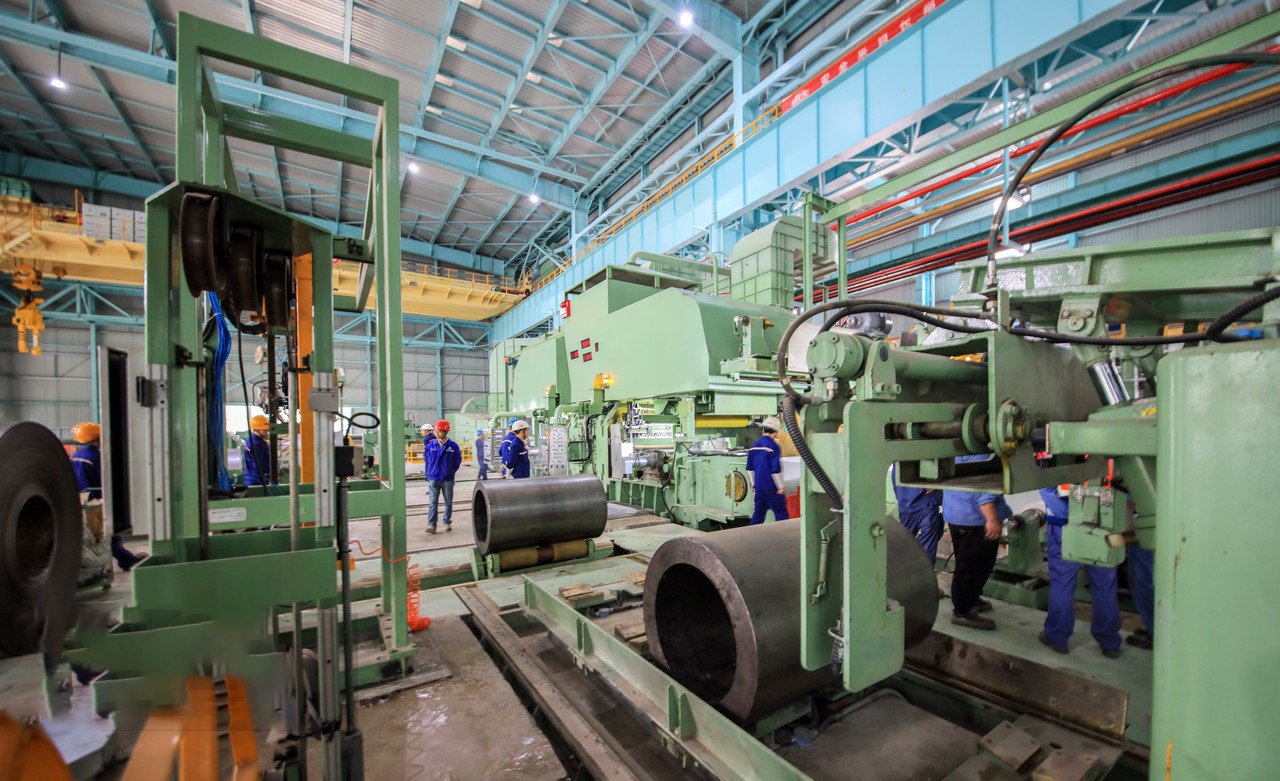
To truly grasp the current market, we must dissect the primary forces creating this turbulence. The landscape is a battleground between massive new supply streams, evolving demand patterns, and the ever-present influence of macroeconomic sentiment. For any business using stainless steel, understanding these individual components is not just academic; it’s essential for survival and growth. By breaking down the factors at play, we can move from a reactive to a proactive procurement posture, anticipating shifts rather than being caught off guard by them.
The Indonesian Supply Surge and Its Market Impact
The single most significant factor shaping the nickel market today is the explosive growth of production in Indonesia. Backed by massive investment, the nation has ramped up its output of Nickel Pig Iron (NPI) and nickel matte, fundamentally altering global supply chains. Data from the International Nickel Study Group (INSG) shows that Indonesia accounted for over 50% of global mined nickel in 2024, a staggering increase from just a decade ago. This has created a structural surplus in the market, putting a cap on price rallies and exerting downward pressure.
However, this supply is not monolithic. A typical client of ours, an automotive parts manufacturer in Southeast Asia, recently faced this issue. They use 304-grade stainless steel, which can be produced using NPI. The abundance of NPI has helped keep their input costs relatively stable compared to the dramatic peaks of the past. But for companies requiring higher-purity nickel for specialized applications, the story is different. The surplus is concentrated in lower-grade nickel, meaning the price for Class 1 nickel, required for EV batteries and other high-tech uses, can still experience periods of tightness and volatility, creating a two-tiered market.
This supply surge has also led to the closure of less competitive mines in other parts of the world, such as Australia. This consolidation of supply in a single region, while currently leading to lower prices, introduces a significant geopolitical risk. Any policy changes from the Indonesian government regarding export taxes, environmental regulations, or foreign investment could send shockwaves through the entire stainless steel industry. At MFY, we constantly monitor these political and regulatory landscapes to provide our clients with forward-looking guidance, helping them mitigate the risk of a sudden supply disruption.
Evolving Demand: The EV Sector vs. Traditional Stainless Steel
The demand side of the nickel equation is equally dynamic. For years, the narrative was dominated by the projected explosive growth in demand from the electric vehicle (EV) sector. Nickel is a critical component in the cathodes of high-energy-density lithium-ion batteries. However, the recent slowdown in EV sales growth in some key markets, coupled with a shift towards lower-cost, nickel-free LFP (lithium-iron-phosphate) batteries for standard-range vehicles, has tempered these expectations. This has removed some of the speculative froth from the market, contributing to the price moderation we've seen since the 2022 peaks.
This doesn't mean EV demand is irrelevant; it's just more nuanced. The long-term transition to electric mobility will still require vast amounts of high-purity nickel. Yet, in the short-to-medium term, the traditional driver of nickel demand—the stainless steel industry—remains king, consuming roughly 70% of all nickel produced. As global economies recover and infrastructure projects ramp up, the demand for stainless steel sheets, pipes, and coils provides a solid floor for nickel prices.
I often advise my clients, particularly distributors, to segment their analysis. The factors driving the price of 316-grade stainless steel (with higher nickel and molybdenum content) for a marine construction project are different from those driving 430-grade (a nickel-free ferritic grade) for home appliances. By understanding which demand driver—be it EV batteries, industrial construction, or consumer goods—most impacts their specific product mix, they can develop more targeted and effective procurement strategies.
Macroeconomic Headwinds and Speculative Influence
Beyond the fundamentals of supply and demand, LME nickel prices are heavily influenced by broader macroeconomic trends and speculative trading. As a dollar-denominated commodity traded on a global exchange, nickel is sensitive to interest rate decisions from the U.S. Federal Reserve, currency fluctuations, and overall global GDP growth forecasts. When economic data is strong and the outlook is positive, industrial demand is expected to rise, and investors are more willing to take on risk, often leading to higher prices. Conversely, fears of a recession can send prices tumbling.
The March 2022 short squeeze was a brutal lesson in the power of speculative influence. A massive short position, when met with a lack of available physical metal, caused prices to skyrocket in a way that was completely disconnected from underlying physical demand. While the LME has since introduced new trading controls, the potential for speculative activity to create extreme volatility remains. We saw a smaller-scale example in August 2024, when better-than-expected U.S. economic data prompted speculators to close short positions, causing a brief but sharp price rally.
For my clients, this means that simply tracking stainless steel inventories is not enough. We encourage them to pay attention to macroeconomic indicators and reports on speculative positioning in the LME. While it’s impossible to predict every market swing, having a broader view helps in setting purchasing triggers and avoiding panic-buying at market peaks or holding off on necessary purchases during a temporary dip. It’s about building a holistic market view that incorporates fundamentals, demand signals, and financial market sentiment.
Nickel is a key component in stainless steelTrue
Nickel typically makes up 8-10% of popular austenitic stainless steel grades like 304, directly linking its price to stainless steel costs.
All nickel grades have identical pricingFalse
The market shows a two-tiered pricing structure with Class 1 nickel (for batteries) experiencing different volatility than Nickel Pig Iron used in stainless steel.
How does LME Nickel volatility directly affect stainless steel sheet prices?
Problem: You see the LME nickel price drop, but your stainless steel sheet quotes don't reflect the change immediately, or they move in a way that seems disconnected. This lag and opacity in pricing makes it challenging to capitalize on market dips or explain cost increases to stakeholders.
LME nickel volatility directly impacts stainless steel sheet prices through the alloy surcharge mechanism. This surcharge, calculated monthly by mills, adds the fluctuating cost of nickel (and other alloys) to a base price, ensuring that volatile raw material costs are passed directly to the end-user.
This direct pass-through mechanism is the core of the pricing structure in our industry. When I first started, I used to get frustrated calls from clients asking, "Nickel is down 5% this week, why hasn't my sheet price dropped?" The answer lies in the calculation period. Mills typically use a prior month's average nickel price to set the surcharge for the current month. For example, the surcharge for July is often based on the average LME price from late May to late June. This creates a lag, meaning today's LME price will only be reflected in your stainless steel cost in a future month. Understanding this lag is fundamental. It prevents reactive decision-making and allows for more strategic, forward-looking procurement. Instead of reacting to daily LME noise, we work with our clients to align their purchasing cycles with the surcharge calculation periods, helping them anticipate costs more accurately and budget with greater confidence. It transforms the pricing mechanism from a source of frustration into a predictable, albeit delayed, tool for financial planning.

The translation of an LME nickel tick into a final price on a stainless steel sheet invoice is a formulaic yet often misunderstood process. It is governed by the alloy surcharge3, a pricing tool that insulates steel mills from the raw material market's volatility but exposes buyers to it. To navigate this effectively, one must look beyond the daily LME price and understand the mechanics of the surcharge, the influence of inventory levels throughout the supply chain, and how market psychology can amplify or dampen these effects. This deeper knowledge empowers buyers to deconstruct their cost structure and identify true savings opportunities.
Deconstructing the Alloy Surcharge Formula
The alloy surcharge is the most critical component linking LME nickel to your final stainless steel sheet price. It is not an arbitrary figure; it is a calculated value designed to cover the cost of the alloying elements above a historical baseline. The two primary inputs for austenitic stainless steel like Grade 304 are nickel and chromium. Each month, mills take the average market price of these elements over a specific, prior period (e.g., the 21st of the previous month to the 20th of the current month). They subtract a historical base value (the cost that is already "baked into" the steel's base price) and multiply the result by the percentage of that element in the specific grade.
For example, Grade 304 stainless steel contains approximately 8% nickel. If the average LME nickel price for the calculation period is $18,000/tonne and the historical base value is $8,000/tonne, the variable portion is $10,000/tonne. This figure is then multiplied by the 8% nickel content to determine nickel's contribution to the surcharge for that month. The same is done for chromium and any other relevant alloys like molybdenum in Grade 316.
This formula explains why price changes aren't instantaneous. A sudden LME price spike on June 15th won't fully impact the surcharge until August, as it only affects a portion of the June-July calculation period that determines the August surcharge. A client in the construction industry once tried to place a massive order to "beat" a price rise they saw on the news. I had to walk them through the surcharge calendar, showing them that the price for the next month was already locked in and they had more time to plan than they thought. This understanding prevents panic and allows for more methodical purchasing.
The Role of Inventory: The Supply Chain Buffer
The alloy surcharge explains the direct cost pass-through, but the speed and magnitude at which this affects market prices are also influenced by inventory levels at every stage of the supply chain—from the mills themselves to service centers, distributors like us, and the end-user. When inventory levels are high across the board, there is a buffer. A sudden increase in the alloy surcharge may not immediately translate to higher spot prices from distributors, as they may be willing to sell older, cheaper stock to maintain market share.
Conversely, when inventories are lean, the effect is almost immediate and can even be amplified. If a distributor knows their replacement cost for a coil of stainless steel sheet will be 10% higher next month due to a surcharge increase, they will adjust their current selling price upwards in anticipation. This is essential for their own margin protection. During periods of low inventory, the market becomes much more sensitive to LME fluctuations and surcharge announcements.
I remember a period in 2023 when service center inventories were exceptionally low. A moderate increase in the nickel surcharge led to a disproportionately large jump in sheet prices because everyone in the supply chain knew that securing replacement material would be difficult and expensive. We advised our clients who had upcoming projects to secure their material early, even at a slightly higher price, to avoid the much larger increases and potential stock-outs that were clearly on the horizon. Monitoring inventory levels, through industry reports and direct conversations with suppliers, provides critical context to the raw surcharge data.
Market Sentiment and Forward Expectations
Finally, the direct price effect is colored by market sentiment and forward expectations. The stainless steel market is not a perfect, emotionless calculator. It is run by people whose decisions are influenced by their outlook. If the general sentiment is bullish (prices are expected to rise), buyers may rush to place orders to lock in current prices, creating a surge in demand that can itself push prices higher, even before the surcharge officially increases. This creates a self-fulfilling prophecy.
This psychological component is especially evident in the "paper" market (futures and options) which can influence the physical market. If speculative traders are heavily betting on higher nickel prices, it can create a sense of inevitable inflation that prompts physical buyers to act. The opposite is also true: in a bearish market, where prices are expected to fall, buyers will delay purchases for as long as possible, waiting for the surcharge to drop. This can lead to a demand vacuum, causing distributors to offer discounts on current stock to generate cash flow, temporarily decoupling prices from the official surcharge.
We guide our clients to be cautious of this sentiment-driven volatility. A key part of our service at MFY is to provide a rational, data-driven perspective. We analyze the underlying supply/demand fundamentals to help determine if a price movement is based on a real shift in the market or is simply short-term speculative noise. This helps our clients make decisions based on solid ground, not market hysteria.
Alloy surcharge lags LME pricesTrue
Surcharges use prior month's average nickel price, creating a 1-2 month delay in price adjustments.
Daily nickel prices change sheet costsFalse
Sheet prices only adjust monthly based on calculated averages, not daily LME fluctuations.
What have been the historical impacts of nickel volatility on stainless steel sheet pricing trends?
Are you concerned that past market shocks could repeat themselves, catching your business unprepared? Major historical events, from financial crises to geopolitical conflicts, have triggered extreme nickel volatility, causing chaotic price swings in stainless steel sheets and derailing even the most carefully laid plans.
Historically, significant LME nickel volatility has led to dramatic and often unpredictable shifts in stainless steel sheet prices. Key events like the 2008 financial crisis and the 2022 LME short squeeze caused price plummets and explosive spikes, respectively, highlighting the material's susceptibility to global macroeconomic and market-specific shocks.
Looking back at these events is more than just a history lesson; it's a critical exercise in risk management. I often review case studies of past volatility with my team and clients. Take the 2022 short squeeze, for instance. Prices for 304 stainless steel sheets4 jumped by over 40% in some markets in a matter of weeks. The clients who navigated this best were not the ones who reacted fastest, but those who had pre-existing strategies, such as a diversified supplier base or some level of fixed-price contracting. They had built resilience into their supply chain before the crisis hit. These historical precedents serve as a powerful blueprint for building a more robust procurement strategy today. They remind us that while we cannot predict the next "black swan" event, we can certainly prepare for its impact by learning from the turmoil of the past and implementing proactive measures to safeguard our operations against such extreme and sudden market shifts.
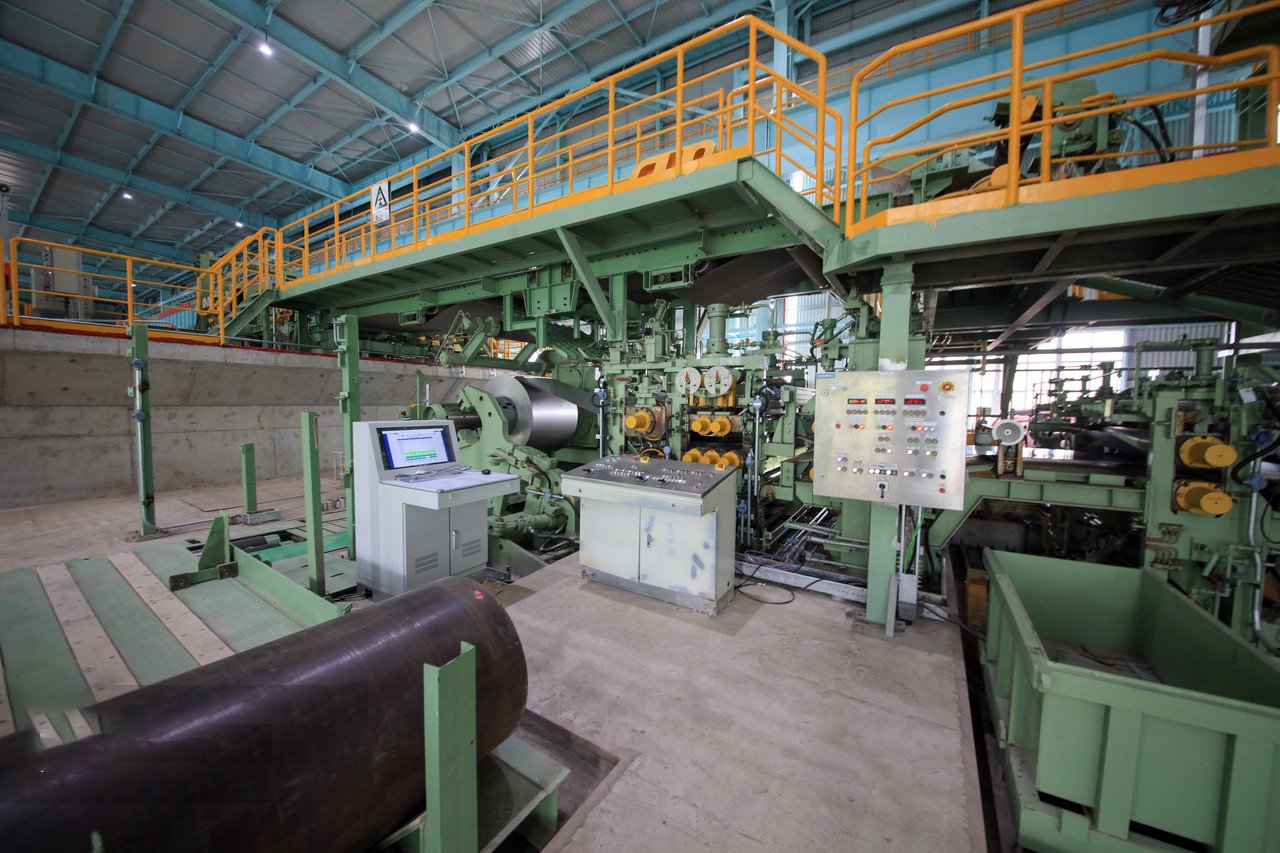
A historical lens reveals clear patterns in how nickel market shocks ripple through to the stainless steel industry. By examining specific pivotal moments, we can better appreciate the mechanisms at play and the strategic lessons they offer. These are not isolated incidents but data points that illustrate the complex relationship between global finance, geopolitics, and the tangible cost of the materials we use every day. Analyzing these events helps us build a playbook for future uncertainty, turning hindsight into foresight.
The Commodity Super-Cycle and 2008 Financial Crash
The period from the early 2000s to 2007 was known as the commodity "super-cycle," driven largely by China's voracious appetite for raw materials to fuel its economic expansion. During this time, nickel prices soared, reaching a then-record high of over \$50,000 per tonne in May 2007. Consequently, stainless steel prices followed suit, and the industry experienced a period of unprecedented cost inflation. For manufacturers, this meant constantly revising quotes and struggling to pass on the rapidly increasing costs to their customers.
The subsequent 2008 global financial crisis provided a dramatic counterpoint. As global industrial activity ground to a halt and credit markets froze, demand for all commodities collapsed. The LME nickel price plummeted by over 70% from its peak. This sent a shockwave through the stainless steel supply chain. Mills that had bought expensive nickel now had to produce steel that could only be sold at a fraction of the price. Distributors were caught with high-cost inventory that was suddenly worth far less than they paid for it.
The key takeaway from this era was the direct correlation between stainless steel pricing and global macroeconomic health. A client of mine, who runs a large fabrication shop for industrial equipment, shared a story from that time. They had stocked up on stainless steel sheets at near-peak prices, anticipating continued project work. When the crisis hit, their orders were cancelled, and they were left with hugely overvalued stock, a situation that nearly bankrupted them. This experience taught them—and many others in the industry—the critical importance of lean inventory management during periods of extreme price inflation and economic uncertainty.
The Indonesian Ore Export Ban and Its Aftermath
A more industry-specific event occurred in 2014 when Indonesia, then a primary global supplier of raw nickel ore, implemented a ban on its export5. The goal was to force downstream investment in domestic smelting and processing facilities. The immediate impact was a sharp rally in LME nickel prices, as the market feared a significant supply shortage. Prices rose by nearly 50% in the first half of 2014. Stainless steel surcharges increased in lockstep, and manufacturers once again faced rising costs.
However, the longer-term impact was more complex. The ban did, in fact, spur the development of a massive nickel pig iron (NPI) industry within Indonesia, but it also prompted other regions, like the Philippines, to ramp up their own ore exports to fill the gap. The market eventually adjusted, and prices began to recede. When Indonesia partially lifted the ban and then reinstated it again in 2020, the market reaction was more muted. The industry had adapted and diversified its supply sources.
This series of events demonstrates the market's ability to adapt to structural supply changes over time. For us at MFY, it underscored the importance of a geographically diversified supply network. By not being overly reliant on a single source of raw material, we can offer our clients more stable and predictable supply chains. It taught our clients the value of asking deeper questions about their suppliers' own supply chains, understanding their exposure to geopolitical risks like export bans or tariffs.
The 2022 LME Short Squeeze: A Black Swan Event
The most dramatic historical event in recent memory was the March 2022 LME nickel short squeeze. This was not driven by physical supply and demand fundamentals but by a massive, speculative financial position. A single large producer held a huge short position, betting on falling prices. When the Russia-Ukraine conflict erupted, concerns over sanctions on Russian nickel (a major source of high-grade material) caused prices to spike. This triggered a cascade of margin calls on the short position, forcing the holder to buy back contracts at any price to cover their losses, sending the LME price from ~\$25,000 to over \$100,000 per tonne in less than 48 hours.
The LME was forced to halt trading for over a week and controversially cancel trades, a move that severely damaged its reputation. For the stainless steel market, the impact was chaos. Mills couldn't price their products because the benchmark was broken. Some withdrew offers entirely, while others issued quotes with unprecedented "nickel volatility" clauses. I spent weeks on the phone with clients, trying to navigate the uncertainty. We had to explain why a sheet of stainless steel that cost 'X' on Monday was suddenly 'X + 40%' on Wednesday, with no guarantee of the price on Thursday.
The primary lesson from the 2022 squeeze was the profound risk embedded in the financialization of commodities. It showed that stainless steel prices could become completely detached from physical reality due to activities in the financial markets. In the aftermath, many buyers have become more interested in pricing mechanisms that are less dependent on the LME or incorporate risk-mitigation clauses. It accelerated the adoption of strategies like fixed-price forward contracts and a greater emphasis on supplier relationships over transactional, spot-market purchases. It was a painful but powerful reminder that the price on the screen is not always the price you can trust.
Nickel volatility affects stainless steel pricesTrue
Historical events like the 2008 financial crisis and 2022 LME short squeeze demonstrate how nickel price swings directly impact stainless steel sheet pricing.
LME only reflects physical market conditionsFalse
The 2022 short squeeze proved LME prices can be distorted by financial speculation, becoming detached from actual supply/demand fundamentals.
What strategies can businesses use to manage the effects of nickel price volatility on stainless steel sheets?
Problem: Your business is constantly exposed to the whims of the nickel market6, with price spikes eating into your profits and making it impossible to provide stable, long-term quotes to your customers. This constant fire-fighting leaves you with little room for strategic growth.
Businesses can manage nickel price volatility by employing a multi-faceted strategy that includes negotiating fixed-price contracts with suppliers, using financial hedging instruments like LME futures or options, diversifying their stainless steel grade usage where possible, and optimizing inventory levels to avoid holding high-cost stock.
Implementing these strategies requires a shift from a purely transactional purchasing mindset to a strategic supply chain management approach. It’s a conversation I have daily with our partners. A construction contractor we work with in the Middle East used to buy on the spot market for every project. After getting hit by a major price surge, we worked with them to develop a new approach. Now, for large, long-term projects, they secure a portion of their required stainless steel sheets through fixed-price forward contracts. For their smaller, more immediate needs, they still use the spot market to maintain flexibility. This hybrid model gives them budget stability for their core business while allowing them to capitalize on market dips when opportunities arise. It's not about finding a single magic bullet, but about building a toolkit of different strategies that can be deployed depending on the market environment and the specific needs of the business. This proactive stance is the key to transforming volatility from a threat into a manageable business variable.

To effectively shield a business from the relentless waves of nickel price volatility, a passive approach is insufficient. It demands a proactive and dynamic strategy that integrates procurement tactics, financial instruments, and operational discipline. The goal is to create a resilient supply chain that can absorb market shocks rather than being broken by them. This involves not only how you buy but also what you buy and when you buy it. By exploring a combination of contractual agreements, material diversification, and smart inventory management, a business can build a formidable defense against price uncertainty.
Strategic Procurement: Beyond Spot Purchases
The most direct way to manage price volatility is through your procurement agreements. Relying solely on the spot market, where you buy material for immediate delivery at the current price, is the most exposed position you can take. A more sophisticated approach involves layering in different types of contracts to balance risk and flexibility.
Fixed-Price Forward Contracts: This is an agreement with a supplier, like MFY, to purchase a specific quantity of stainless steel sheets at a set price for delivery at a future date. This completely eliminates price uncertainty for that volume of material. I have a client who manufactures industrial tanks, and their projects often last 6-9 months. We establish forward contracts with them for 70% of their projected needs for a project's duration. This gives them the confidence to quote their customers a fixed price, a significant competitive advantage. The trade-off is that if the market price falls, they don't benefit from the drop for that contracted volume, but for most businesses, the value of budget certainty outweighs this risk.
Ceiling Price Agreements: A variation is a ceiling price contract, where you agree on a maximum price. If the market price at the time of delivery is lower, you pay the lower price. If it's higher, you only pay up to the agreed-upon ceiling. This provides protection against price spikes while retaining the ability to benefit from price drops. These contracts often come with a premium, but they can be an excellent tool for balancing risk and opportunity. Building strong, long-term relationships with suppliers is key to accessing these more strategic contract types.
Financial Hedging and Market Instruments
For larger consumers of stainless steel, engaging with financial hedging instruments can be a powerful strategy, though it requires a higher level of sophistication. This involves using the LME itself to offset physical price risk.
Futures Contracts: A company can buy an LME nickel futures contract. If the physical price of nickel (and thus stainless steel) goes up, the value of their futures contract also goes up, and the gain on the financial contract can offset the higher price they have to pay for the physical material. Conversely, if the price falls, they lose money on the futures contract, but that loss is offset by the lower price they pay for their steel. This effectively locks in a price. It's crucial to note that this requires specialized expertise to manage the margin calls and basis risk (the risk that the futures price and physical price don't move in perfect sync).
Options Contracts: A less aggressive approach is buying a call option. This gives the holder the right, but not the obligation, to buy nickel at a certain price (the "strike price") in the future. If the market price rises above the strike price, they can exercise the option to secure a lower cost. If the price stays below the strike price, they simply let the option expire, losing only the initial premium they paid for it. This acts like an insurance policy against catastrophic price increases. We typically see our largest and most sophisticated clients, like multinational equipment integrators, use these tools in conjunction with their physical procurement.
| Strategy | Risk Level | Complexity | Best For |
|---|---|---|---|
| Spot Market Buying | Very High | Low | Small, unpredictable needs; capitalizing on deep market dips. |
| Fixed-Price Contract | Low | Medium | Securing costs for long-term projects with fixed budgets. |
| Inventory Management | Medium | Medium | Businesses with predictable demand and storage capacity. |
| Financial Hedging | High | High | Large, sophisticated consumers with dedicated finance teams. |
Material Diversification and Value Engineering
Another powerful, yet often overlooked, strategy is to manage volatility from an engineering and design perspective. This involves questioning whether the specified grade of stainless steel is absolutely necessary for the application.
Exploring Alternative Grades: Is a high-nickel austenitic grade like 304 essential, or could a low-nickel austenitic (like a 200-series grade) or a nickel-free ferritic grade (like 430) perform just as well? I worked with a client who manufactures commercial kitchen backsplashes. For years, they used Grade 304 by default. We initiated a conversation with their engineering team and, after testing, they realized that for this specific, non-critical application, Grade 430 offered sufficient corrosion resistance and a much more stable and lower price point, as its price is not tied to the LME nickel market. This change alone saved them over 15% on material costs and insulated them from nickel volatility.
Value Engineering: This proactive approach involves designing products from the ground up to minimize the use of volatile or expensive materials. It could mean reducing the gauge (thickness) of the stainless steel sheet where structurally possible, or designing components to be nested more efficiently on a standard sheet to reduce scrap waste. Since scrap has a lower value than the primary material, minimizing it directly impacts the bottom line. This requires close collaboration between procurement, engineering, and production teams, but it's a sustainable way to build long-term cost resilience directly into your products.
Fixed-price contracts eliminate price uncertaintyTrue
Fixed-price forward contracts lock in material costs for future deliveries, providing budget stability regardless of market fluctuations.
Spot market buying offers price stabilityFalse
Spot market purchases expose businesses to full price volatility as they pay current market rates at time of purchase.
How can companies optimize their purchasing decisions amidst nickel price fluctuations?
Problem: You're caught in a cycle of reactive purchasing—buying when you're desperate or holding off in fear of a price drop, only to miss the bottom. This haphazard approach erodes margins and creates constant stress, preventing you from making clear, data-driven procurement decisions.
Companies can optimize purchasing by developing a clear buying strategy based on price triggers and inventory levels, not emotion. This involves using market intelligence to identify buy signals, averaging costs through phased purchases, and leveraging supplier relationships for insights and flexibility, turning market chaos into opportunity.
The key to optimization is shifting from trying to "time the market" perfectly to making consistently good decisions over time. No one has a crystal ball that can predict the exact peak or trough of the nickel market. I once had a client who held off on a major purchase for three months, waiting for a price drop that never came. The delay cost him the project. Since then, we've worked with him to implement a strategy of "dollar-cost averaging for procurement7" for his steel. He now breaks his large buys into smaller, regular purchases. This approach ensures he never buys all his inventory at a market peak. While he may not always get the absolute lowest price, his average cost over the year is much more predictable and competitive, allowing him to run his business with greater stability and confidence. This disciplined, systematic approach is the foundation of truly optimized purchasing in a volatile world.
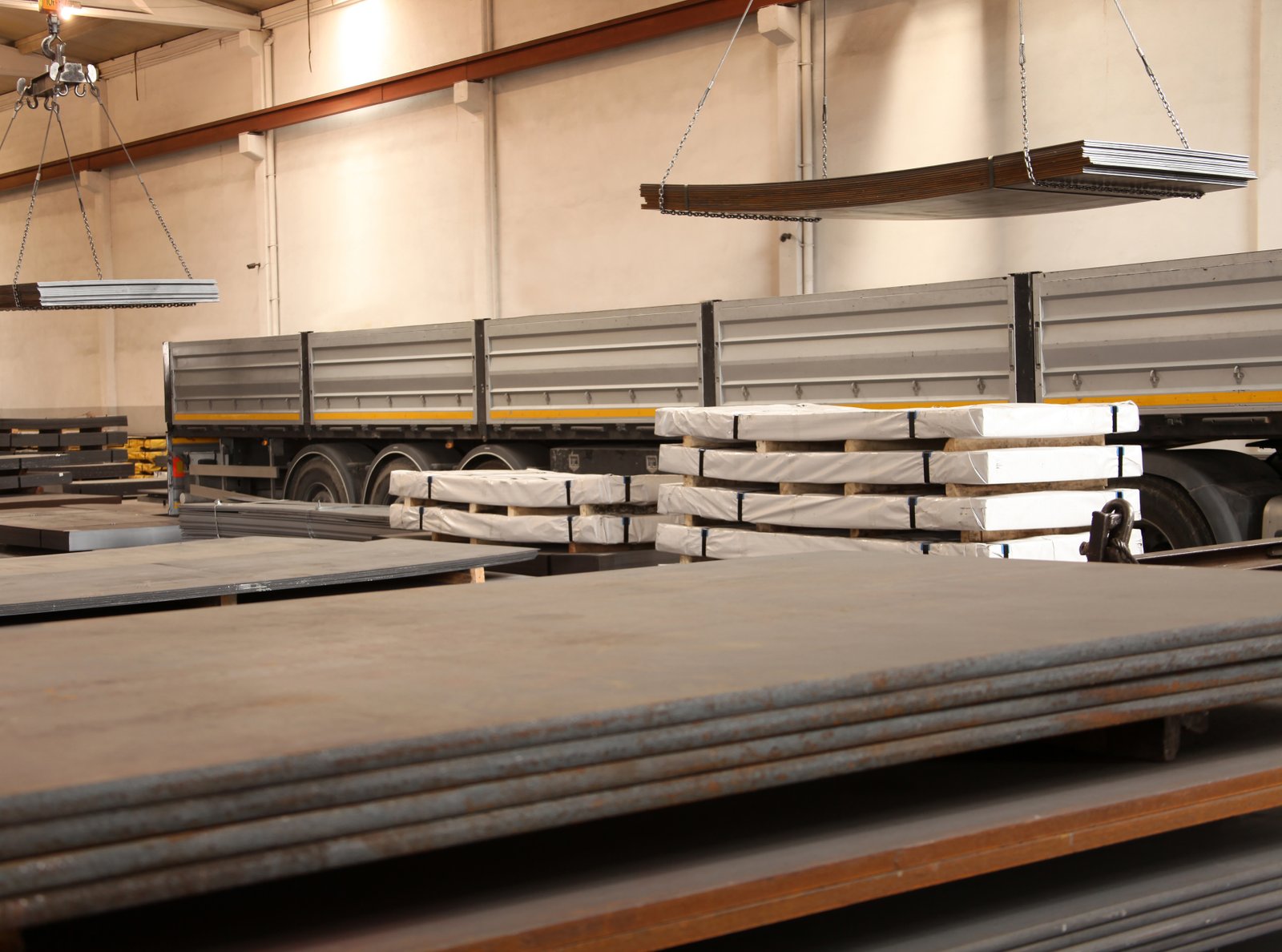
Optimal purchasing in a volatile market is less about chasing the lowest possible price and more about achieving the best possible average price over time while ensuring operational continuity. It's a strategic discipline that blends market analysis, inventory management techniques8, and supplier collaboration. By creating a systematic framework for decision-making, companies can remove emotion and guesswork from the equation. This framework should be built on three pillars: leveraging market intelligence to create data-driven buy signals, implementing disciplined purchasing tactics, and cultivating strategic supplier partnerships that act as a source of competitive advantage.
Developing Data-Driven Purchasing Triggers
Gut-feel purchasing is a recipe for disaster in the nickel market. An optimized strategy relies on pre-defined triggers based on data. This means deciding in advance under what conditions you will buy, hold, or increase your purchasing volume.
Technical and Fundamental Analysis: While you don't need to become a full-time commodity trader, understanding basic market signals is crucial. Fundamental analysis involves looking at the supply and demand picture—tracking things like Indonesian nickel production figures[^4], Chinese stainless steel output, and global inventory levels at exchanges like the LME and SHFE (Shanghai Futures Exchange). Technical analysis involves looking at price charts to identify trends, support levels (a price floor where buying tends to emerge), and resistance levels (a price ceiling where selling tends to emerge). For example, a simple trigger could be: "If the LME nickel price drops to a 6-month support level and our physical inventory is below 45 days, we will place an order for 30 days of forward consumption."
Monitoring Leading Indicators: Don't just watch the nickel price itself. Monitor leading indicators that can signal future movements. This includes the alloy surcharge announcements from major mills, which provide a direct view into next month's costs. Tracking freight costs, such as the Baltic Dry Index, can signal shifts in global trade and logistics pressures. Following the financial news for major interest rate decisions or currency movements can also provide clues. At MFY, we synthesize this data into a monthly market outlook for our key partners, helping them see the bigger picture and set more intelligent purchasing triggers.
Implementing Disciplined Buying Tactics
Once you have your triggers, you need the discipline to execute your strategy. This means moving away from all-or-nothing purchasing decisions and embracing more nuanced tactics that manage risk over time.
Phased Purchasing (Cost Averaging): As mentioned earlier, instead of trying to make one perfect purchase at the market bottom, break your required volume into several smaller purchases over a period of time. If you need 100 tonnes of stainless steel sheet for the quarter, you might buy 33 tonnes each month. This smooths out your average purchase price. When the price is high, your fixed budget buys less; when the price is low, it buys more. This disciplined approach removes the paralysis that comes from trying to perfectly time the market and ensures a more predictable blended cost.
Strategic Inventory Management: Your inventory is a physical hedge against volatility. The optimal level depends on your risk tolerance and operational needs. The goal is to avoid being a forced buyer in a high market. A strategy could be to build a slightly larger-than-normal inventory when prices are below the 12-month average (your data-driven trigger) and then draw down that inventory when prices spike. This requires storage capacity and cash flow, but the cost of holding inventory can often be far less than the cost of being forced to buy at a market peak or shutting down a production line due to a stock-out.
Cultivating Strategic Supplier Relationships
In a volatile market, your suppliers are not just vendors; they are critical strategic partners and a source of invaluable market intelligence. A purely transactional relationship based on finding the cheapest price of the day is incredibly fragile.
Information Sharing and Flexibility: A strong relationship with a supplier like MFY means you have a partner who is willing to share insights and offer flexibility. We are in the market every single day, talking to producers, logistics providers, and end-users across the globe. We can often provide color and context that you won't find in a public report. A good partner might call you and say, "We're seeing port congestion building in this region, which could delay shipments in two months. You might want to pull forward some of your orders." This kind of proactive advice is priceless.
Access to Favorable Terms: Furthermore, long-term, loyal clients are more likely to gain access to favorable terms that help manage volatility. This could include access to fixed-price contracts, ceiling price agreements, or more flexible delivery schedules. When supply gets tight, suppliers will always prioritize their strategic partners first. In the chaotic aftermath of the 2022 nickel squeeze, our ability to secure material for our long-term partners, while others struggled, was a direct result of the strong, trust-based relationships we had built over years. Viewing your supplier as an integrated part of your procurement team is perhaps the ultimate optimization strategy.
Dollar-cost averaging reduces price volatility riskTrue
Phased purchasing smooths out average costs over time, preventing extreme highs/lows.
Suppliers should be treated as transactional vendorsFalse
Strategic supplier relationships provide market intelligence and flexibility during volatility.
Conclusion
Ultimately, navigating LME nickel volatility is not about predicting the future but about building resilience. By understanding the alloy surcharge, learning from history, and implementing a blended strategy of smart contracting, inventory management, and strong supplier partnerships, you can protect your margins and achieve supply chain stability.
-
Learn how LME nickel prices influence stainless steel pricing strategies ↩
-
Understand the impact and factors leading to the nickel market surge ↩
-
Learn the calculation method of alloy surcharge affecting stainless steel costs ↩
-
Discover the reasons behind significant price spikes in 304 stainless steel in 2022 ↩
-
Understand the consequences of the Indonesian nickel ore export ban on global markets ↩
-
Learn about factors contributing to nickel price changes and their implications for the steel industry. ↩
-
Discover a method to reduce cost volatility when purchasing raw materials. ↩
-
Gain insights into balancing stock levels to avoid risks from price spikes or shortages. ↩
Have Questions or Need More Information?
Get in touch with us for personalized assistance and expert advice.
